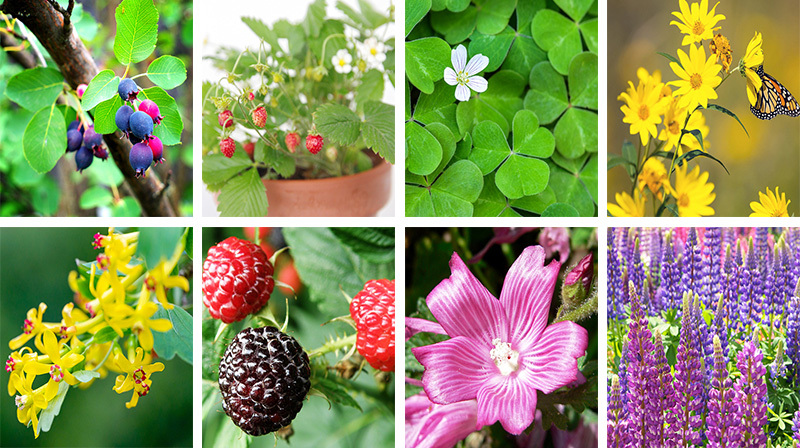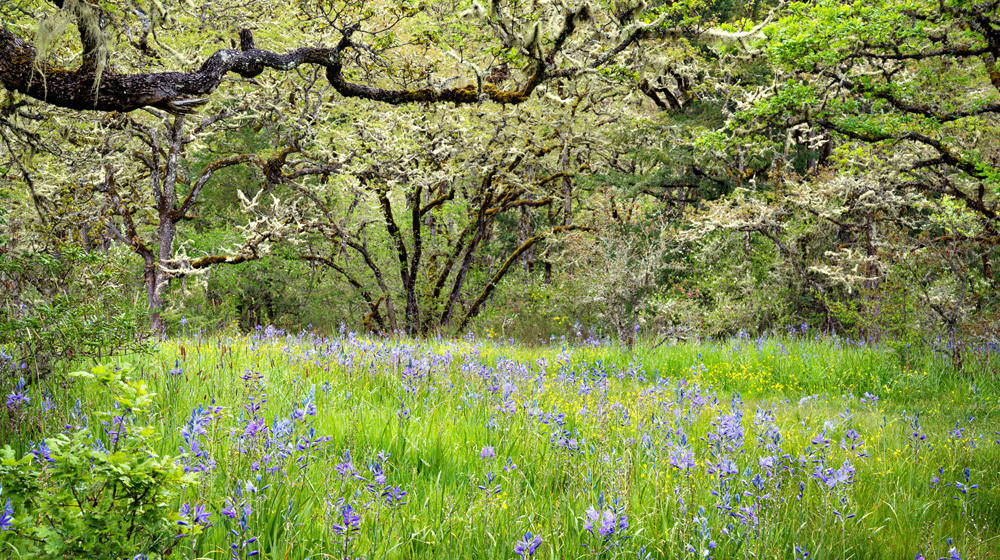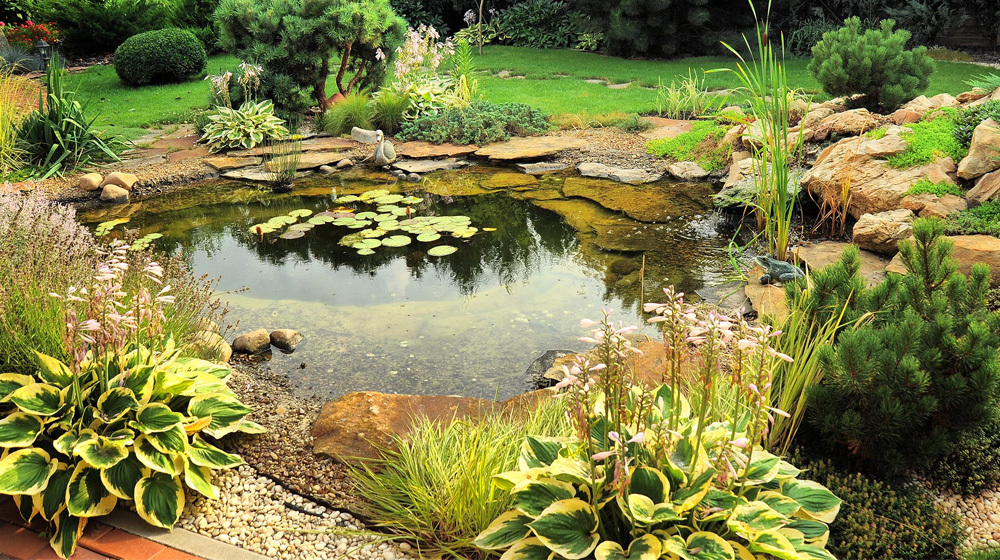Garden Ecosystems

This guild takes the delicious and elegant fruit tree - the "Northline" Serviceberry - as its centerpiece. Around it, we’ve added three of the best native berries; beneath it, a selection of beautiful wildflowers and green vegetables; and helping alongside, the companion nitrogen-fixer Broadleaf Lupine.
Planted together, this guild will eventually fill an approximately 20 ft. diameter circle or 15 ft. corner space.

There is less than 1/2 of one percent of the original Oak Savanna habitat remaining in North America. This is a critically important habitat for various plants and animals, including humans. This guild of native grasses, wildflowers and oaks are native to Oak Savannas of the West, and begin to regrow a patch of this endangered ecology in your own front yard.
This mini edible ecosystem is centered around the Oak tree native to your area (We carry White Oak, Black Oak, and Canyon Live Oak). Around this centerpiece, Wild Rye, Indian Ricegrass and Slender Hairgrass are planted, interspersed with the blues, purples, oranges, whites, and pinks of Great Camas, Broadleaf Lupine, and a host of other wild lilies. (There are many other species in Western Oak Savannas, including Hazelnut, Serviceberry, Wild Grape, and more.)
Planted together, this guild will eventually fill an approximately 20 ft. diameter circle, or bigger.

This pre-designed edible ecosystem is for the dryland garden. Gardeners with water restrictions or in particularly dry areas can still select drought-tolerant species for the garden. To start, it takes the California Black Oak as the centerpiece. Then, alongside it, the beautiful Golden Current and nitrogen-fixing Buffaloberry; and beneath it - a selection of beautiful drought-tolerant wildflowers, fruits, roots and grains.
Planted together, this package will eventually fill an approximately 20 ft. diameter circle.

These native plants like life on the wetter side. Two of them prefer to be submerged (Indian Potato, Cattail), while the others are simply more tolerant of wet and waterlogged areas. If you have low-lying mucky area in your yard, or a garden area under a downspout, you can grow these plants in a rain garden. Or if you plan to add a pond, you can place the aquatic plants in the pond, and the rest around the edges.
The guild takes the beautiful native Crabapple as its centerpiece. Surrounding it, we offer two great berries, the American Cranberry and Gooseberry; underneath, the edible spreading roots of Springbank Clover, Pacific Silverweed, and Indian Potato; and to finish, the vigorous edible vegetables of Cattail ("Nature's Supermarket"), Panicled Bulrush, and Waterleaf (also a beautiful wildflower).
Planted together, this package will eventually fill an approximately 15 ft. diameter circle.